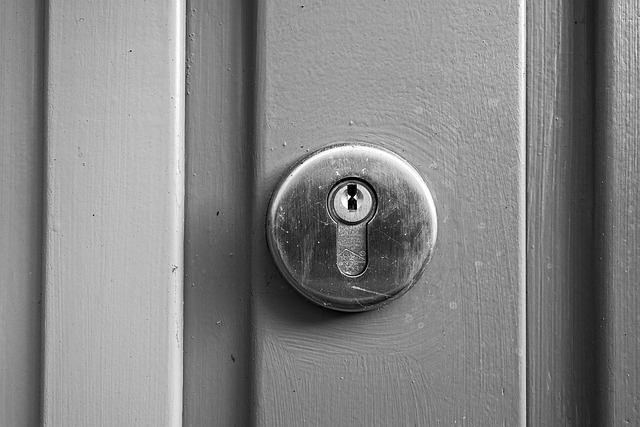Surveillance in rural areas faces unique challenges like vast land and sparse resources, but motion-activated cameras offer an effective solution. These advanced systems cover extensive areas, trigger by movement, provide real-time data, and enable remote alerts, enhancing security. Drone-assisted surveillance further revolutionizes security, offering comprehensive coverage, cost-effectiveness, and flexibility compared to traditional methods. By empowering property owners with proactive measures and real-time data, drone surveillance deters intruders and facilitates swift responses, making it a powerful tool for safeguarding rural properties. Motion-activated cameras, strategically placed, offer an affordable and efficient solution for monitoring vast areas without constant human presence. Drones, integrated with these cameras, provide powerful tools for continuous property surveillance through pre-programmed flight paths, enhancing safety in rural homes and land.
In the vast and often remote landscapes of rural properties, traditional surveillance methods can be inadequate. This article explores drone-assisted surveillance as a cutting-edge solution to enhance security in these areas. We delve into the unique challenges faced by rural landowners and how advanced technology, such as motion-activated cameras, integrated with drones, offers an efficient and effective response. Discover the numerous benefits, best practices, and future potential of this innovative approach, transforming the way we secure our rural spaces.
- Understanding the Challenges of Rural Surveillance
- The Benefits of Drone-Assisted Surveillance
- Implementing Motion-Activated Cameras in Rural Settings
- Best Practices and Future Prospects for Drones in Agriculture
Understanding the Challenges of Rural Surveillance

Surveillance in rural areas presents unique challenges that differ significantly from urban settings. One of the primary difficulties is the vast expanse of land to be monitored, often with sparse human resources and limited infrastructure. Additionally, rural locations are typically characterized by diverse terrain, including forests, fields, and rugged landscapes, which can hinder traditional surveillance methods.
Motion-activated cameras for rural properties offer a promising solution to these challenges. These advanced systems can cover extensive areas effectively, triggered by any movement, providing valuable real-time data and alerts. Their remote access capabilities allow property owners or authorities to monitor these areas from a central location, enhancing security and response times.
The Benefits of Drone-Assisted Surveillance

Drone-assisted surveillance offers a revolutionary approach to enhancing security for rural properties, providing several significant advantages over traditional methods. One of the key benefits is its ability to implement motion-activated cameras in remote areas, which are often challenging to monitor constantly. These drones can efficiently cover vast expanses, ensuring that every corner of the property is under watchful eye, especially during periods of inactivity when human presence is scarce.
Additionally, drone surveillance allows for a more cost-effective and flexible security system. Unlike fixed cameras or traditional patrols, drones can access hard-to-reach locations and quickly adapt to changing landscapes, offering a dynamic solution. This technology enables property owners to take a proactive approach to security, deterring potential intruders and providing valuable real-time data for quick response and better decision-making.
Implementing Motion-Activated Cameras in Rural Settings

In rural settings, where vast landscapes and sparse populations present unique security challenges, implementing motion-activated cameras offers a powerful solution. These innovative devices have revolutionized surveillance options for property owners by providing a cost-effective and efficient way to monitor large areas. With advanced motion detection capabilities, they can capture real-time footage of any suspicious activity, from unauthorized entry to wildlife interactions, without constant human oversight.
The strategic placement of motion-activated cameras around rural properties ensures comprehensive coverage, deterring potential intruders and providing critical evidence in the event of security breaches. Moreover, these cameras are environmentally friendly and require minimal maintenance, making them an ideal long-term investment for enhancing rural property safety and security.
Best Practices and Future Prospects for Drones in Agriculture

Drones are transforming agriculture, offering efficient and cost-effective solutions for various tasks, especially in rural areas. When it comes to surveillance, integrating drones with motion-activated cameras provides a powerful tool for property owners. Best practices involve pre-programmed flight paths that cover every corner of the property, ensuring comprehensive monitoring. These flights can be scheduled at regular intervals, allowing for constant vigilance without constant manual intervention.
Looking ahead, the future prospects for drones in agriculture are promising. Advancements in technology will lead to improved camera resolution and longer battery life, enabling even more effective surveillance. Additionally, artificial intelligence can enhance image analysis, detecting anomalies or suspicious activities automatically. As drone usage becomes more widespread, regulatory frameworks may also evolve, providing clearer guidelines for safe and responsible integration of these aerial assets into rural landscapes, further optimizing their potential in agriculture.
Drone-assisted surveillance offers a revolutionary approach to securing rural properties by providing an efficient, cost-effective solution to the unique challenges of monitoring remote areas. Integrating motion-activated cameras into this technology further enhances security measures, allowing property owners to gain unparalleled visibility and control over their land. As drone use in agriculture continues to evolve, adopting best practices ensures a sustainable and successful implementation of these innovative systems for rural surveillance.
